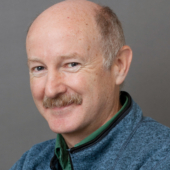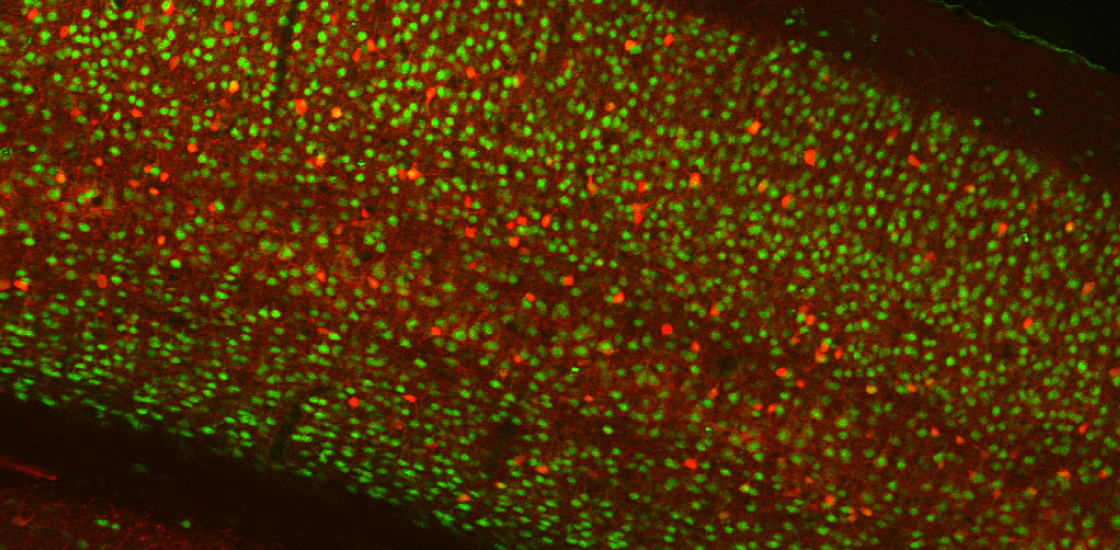THIS ARTICLE IS MORE THAN FIVE YEARS OLD
This article is more than five years old. Autism research — and science in general — is constantly evolving, so older articles may contain information or theories that have been reevaluated since their original publication date.

The simultaneous firing of neurons in groups, or ‘ensembles,’ is thought to underlie learning, memory, perception and behavior. As the cells in nascent ensembles repeatedly fire together in the brain, the physical connections between them change, and the group becomes ever more cohesive. Canadian psychologist Donald Hebb proposed this theory of ‘cell assemblies’ more than 60 years ago.
In a new report published 12 August in Science, researchers show they can build ensembles of neurons from scratch in living brains1. Using mice engineered so that their neurons fire in response to a beam of light, Rafael Yuste and his colleagues triggered tandem activity among about 30 neurons in the brain’s visual cortex.
After the researchers stimulated the neurons at least 50 times, the cells began firing as a unit on their own. And once the ensemble had formed, stimulating a single neuron caused the rest of those in the group to fire.
We asked Yuste, professor of biological siences and neuroscience at Columbia University, what these new human-made ensembles reveal about the brain and about conditions, such as autism, that are tied to faulty brain wiring.
Spectrum: Why did you want to try to create new neuronal ensembles in the mouse brain?
Rafael Yuste: We don’t understand how the brain works, despite the fact that we’ve been studying it for more than 100 years. Some people reason that the brain is very complicated: It’s like deciphering an impenetrable jungle and it’s going to take a long time to go through all of it. But a more optimistic point of view is that we’ve just been looking at the brain at the wrong scale.
Neuroscientists have been studying the brain one neuron at a time. But the brain is operating many neurons at a time. Imagine that you’re trying to watch television by looking at one pixel at a time; you will never see the picture. And even if you look at a movie one pixel at a time on every TV on the planet, you still won’t get it.
Our proposal is that the brain is an emergent system, where its function is a consequence of interactions between its units. If this is the case, then by definition you can’t see the emergent system if you look at the single units. So the question is: Do neurons do something together that they don’t do individually, just like the pixels on a TV screen?
For most of my career, I’ve focused on that question by building methods that let us see a larger piece of the screen, so to speak. And when we do that, we can see these coactive ensembles of neurons. The ensembles are just like an image on a TV screen. When they turn on together, they form a pattern. And it’s the pattern that matters, not the individual neurons, because neurons can be part of many patterns.
S: How does stimulating neurons with light lead them to form an ensemble?
RY: We still don’t know. Other researchers have shown that if two neurons are connected and fire together, their connections get stronger. So we hypothesize that stimulating groups of neurons together — in our case, by using light — strengthens the connections between the cells, causing them to stick together as a group. We are now trying to confirm this hypothesis.
S: What happens when you activate the artificial ensembles in the visual cortex? Does it cause the mice to see something?
RY: This is completely speculative. But it’s possible that when we build an ensemble, we’re making what doctors call an ‘aura’ or a ‘false scene.’ For instance, the mouse might see a flash of light in one part of the visual field. Some people who have migraines or epilepsy see these auras spontaneously.
S: Is there a way to confirm whether that’s happening?
RY: That’s what we’re trying to do now. We can train a mouse to lick when you show them a particular image. Now we’re trying to train the mice to associate the activation of this artificial ensemble with a particular behavior. If we can stimulate the visual cortex, instead of the retina, and trigger the behavior, then we can assume it’s because the mouse thinks it’s seeing something.
S: Why is your study important?
RY: One reason is that it shows how plastic — flexible — the cortex is. If we can reprogram brain circuits, then maybe one day we could reprogram a faulty circuit in someone with schizophrenia or epilepsy, for example.
According to Donald Hebb, ensembles are the physical traces of memories. If you can trigger them to form, then, in principle, you could imprint a new memory or change an old one. Because of that, we’re very concerned about the ethical implications of these methods. In fact, we held a meeting in New York this month on the ethical consequences of neurotechnology. We’re working with philosophers, legal experts and ethicists to establish guidelines for the use of this technology.
S: Do your findings have relevance to autism?
RY: We’re looking at visual ensembles in mice born with extra neurons because of a chemical treatment. These mice have behaviors that resemble some features of autism, such as social problems and repetitive behaviors. We’re finding that these mice have more ensembles than controls do, and these ensembles appear to be stronger (more tightly connected).
S: Could you apply your approach to eliminate excess ensembles?
RY: That’s a wonderful question, and that’s one experiment we’re doing. We suspect that ensembles arise because neurons that fire together get ‘glued together.’ So we think we might be able to apply light in a pattern that would cause the neurons to fire independently of each other, instead of together. And if we do that a lot, we would expect that ‘glue’ to get weaker.

By joining the discussion, you agree to our privacy policy.